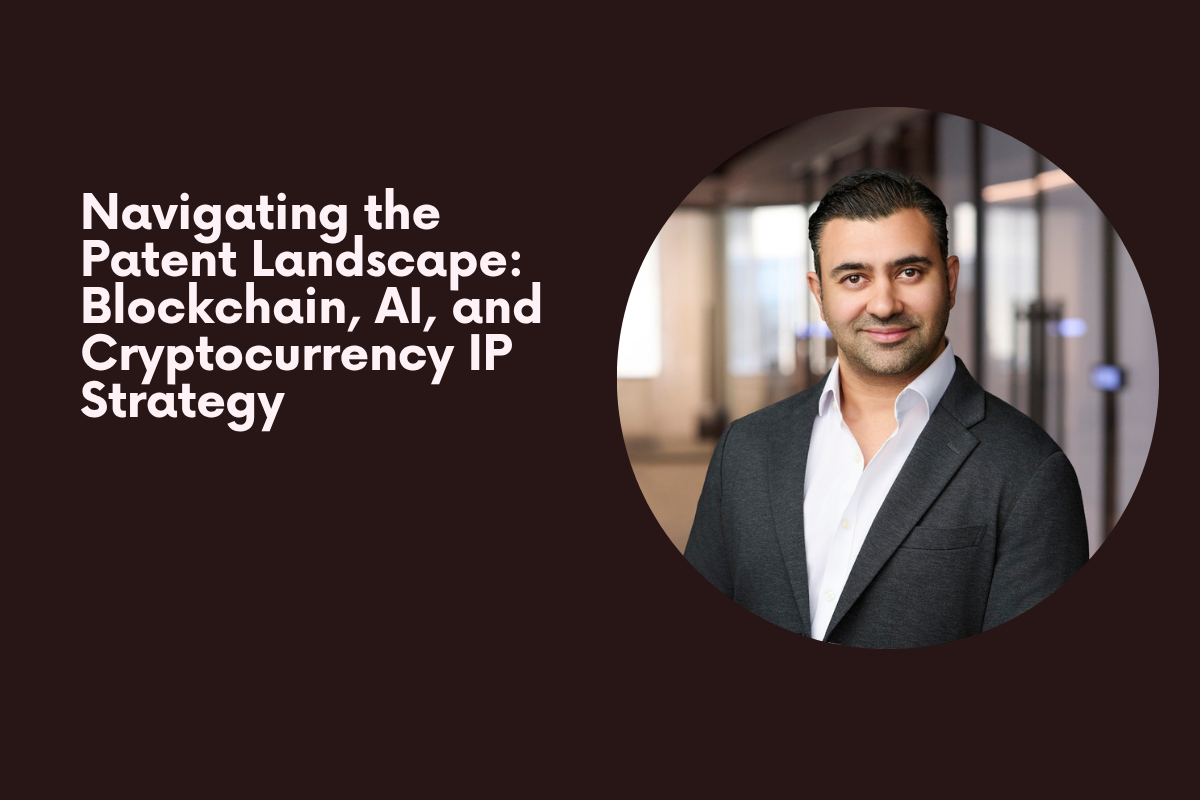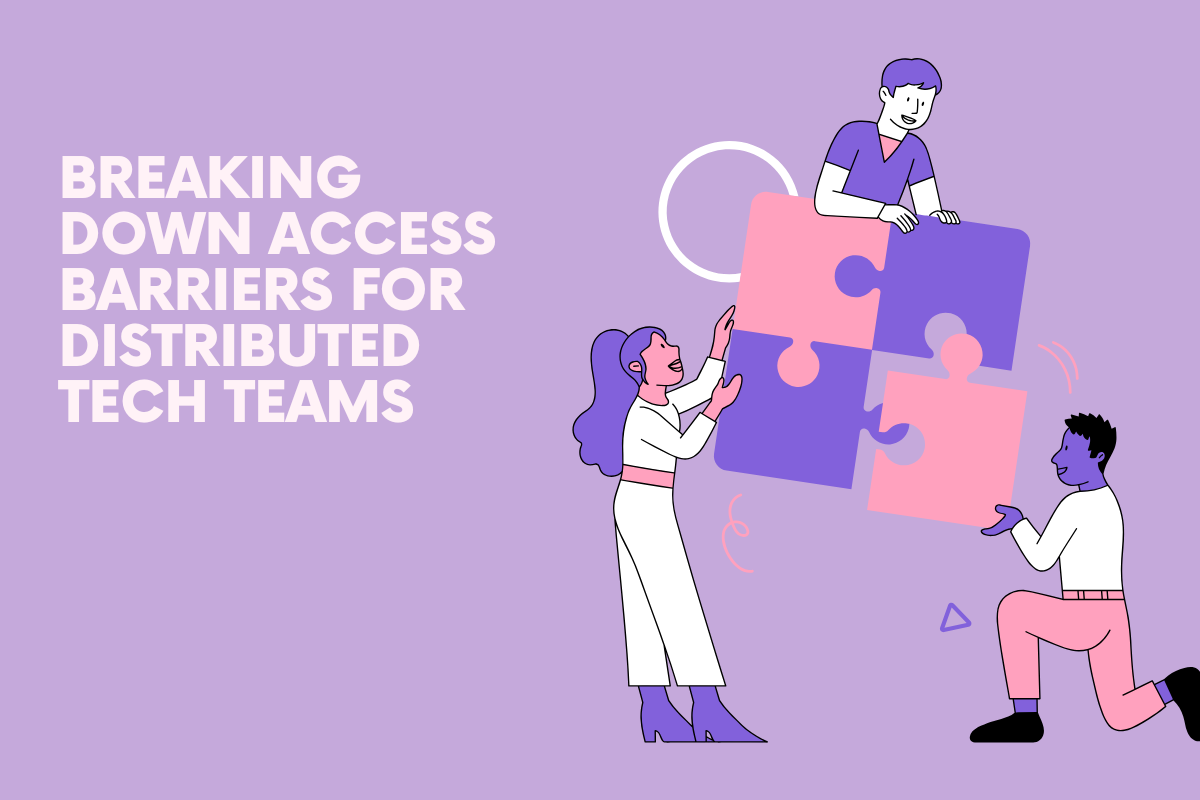An Expert Q&A with Roozbeh Gorgin, Counsel at Sterne, Kessler, Goldstein & Fox P.L.L.C.
As blockchain and cryptocurrency technologies continue to reshape industries from finance to supply chain management, companies face increasingly complex intellectual property challenges. The intersection of emerging technologies like artificial intelligence with decentralized systems creates unique patent considerations that require specialized expertise and strategic thinking.
In this comprehensive Q&A, we speak with Roozbeh Gorgin, a counsel at Sterne, Kessler, Goldstein & Fox P.L.L.C., who brings extensive experience in patent prosecution and portfolio development for electronics and computer technologies. With particular expertise in artificial intelligence and machine learning technologies, and contributions to AI IP publications, Roozbeh offers valuable insights into the evolving patent landscape for blockchain and cryptocurrency innovations.
From navigating the USPTO's scrutiny of abstract ideas in fintech to building defensible patent portfolios that can withstand post-grant challenges, this discussion explores the strategic considerations that blockchain and AI companies must address when protecting their innovations. Whether you're developing consensus algorithms, AI-powered trading systems, or hybrid blockchain-AI architectures, understanding these patent strategy fundamentals is crucial for maintaining competitive advantage in rapidly evolving technology sectors.
The following discussion covers three critical areas: foundational patent strategies for blockchain technologies, the unique challenges of patenting AI-powered cryptocurrency applications, and best practices for building patent portfolios that can survive validity challenges in this heavily scrutinized space.
Question 1: Patent Strategy for Blockchain and Cryptocurrency Technologies "With your expertise in patent prosecution and portfolio development for electronics and computer technologies, what patent strategies do you recommend for blockchain and cryptocurrency companies? How do you navigate the challenge of patenting decentralized technologies while addressing prior art in this rapidly evolving space?"
First, any patent strategy for blockchain and cryptocurrency technologies must ultimately be tailored to each company’s specific goals, market position, and long-term vision. There is no one-size-fits-all solution. However, a general framework of strategic considerations that I typically recommend for clients in this space is:
- Focus on Technical Implementation, Not Abstract Ideas:
The USPTO and courts are particularly sensitive to abstract ideas under §101, especially in fintech. When drafting claims, I emphasize how the blockchain innovation is implemented—such as novel consensus algorithms, secure key management protocols, off-chain/on-chain data interactions, or unique smart contract architectures. Emphasizing tangible improvements to computer functionality or network performance is critical.
- Identify Patentable Differentiators Early:
Blockchain companies often evolve rapidly, so I work closely with engineering teams to identify patentable subject matter during the product design phase. This allows any company to capture key innovations before they become industry standards or are disclosed publicly. Timing is critical to avoid prior art from open-source disclosures or academic publications.
- Modular Claiming Strategy:
I recommend building a portfolio with layered claims across system-level, method-level, and component-level innovations. This approach protects both core blockchain infrastructure and application-specific use cases (e.g., decentralized finance (DeFi), identity, supply chain, gaming). It also gives flexibility to license or assert different layers depending on the business objective.
- Use Continuation Practice Strategically:
Given how quickly blockchain technology evolves, I would highly recommend using continuation filings to broaden or pivot claim scope as markets mature. A well-managed continuation strategy lets you maintain a pending application while adapting to new business models, enforcement opportunities, or competitive threats.
- Global Filing Strategy with Caution:
Blockchain technologies are borderless, but international patent protection must be balanced with cost and enforcement considerations. Prioritize jurisdictions with strong enforcement (e.g., U.S., EPO, Singapore) and markets where key customers, partners, or competitors operate, and ultimately where your main business is being done.
- Navigating Prior Art and Open Source:
Prior art is a real challenge. If it’s within your budget, I would use landscape and freedom-to-operate searches early to understand what’s already been published—especially in academic literature, GitHub repositories, and open-source licenses. When relevant, I would also advise that any contributions to open-source projects are done under IP-aware governance to preserve proprietary rights.
- Defensive and Offensive Uses of IP:
Blockchain is increasingly subject to litigation, and patent portfolios are valuable not only for protection but also for leverage in partnerships, funding, and potential M&A. I would encourage building portfolios that support both defensive posturing (e.g., against competitors) and offensive licensing or enforcement, if needed.
- Integration with Business Objectives:
Ultimately, patent strategy must serve business strategy. For example, a company focused on protocol development may patent consensus mechanisms and leave smart contracts open-source to drive adoption. Conversely, an enterprise solution provider may prioritize end-to-end systems or integrations with legacy infrastructure. Patent strategy for blockchain and cryptocurrency technologies must ultimately be tailored to each company’s specific goals, market position, and long-term vision. There is no one-size-fits-all solution.
Question 2: AI and Machine Learning Patents in Crypto Applications "Given your experience with artificial intelligence and machine learning technologies, combined with your contribution to AI IP publications, how do you approach patenting AI-powered cryptocurrency applications such as trading algorithms, fraud detection systems, or automated compliance tools? What unique considerations arise at the intersection of AI and blockchain patents?"
Patenting AI-powered cryptocurrency applications—such as trading algorithms, fraud detection systems, or automated compliance tools—requires a strategic approach that addresses both the technical complexity and legal challenges at the intersection of AI and blockchain.
I focus on framing the invention as a technical solution to a technical problem, emphasizing how the AI model functions within a broader system context and contributes to tangible improvements (e.g., accuracy, speed, adaptability). It’s critical to go beyond stating that AI, machine learning, or blockchain is used. We need to describe these technologies at a more detailed level. For example, describe the model architecture, training methods, data sources (on-chain/off-chain), and the interaction with blockchain elements for your specific use cases.
Also, I would recommend drafting layered claims covering the AI model, its integration with blockchain infrastructure, and the system-level architecture to maximize protection and adaptability. Given the heightened scrutiny in the U.S. with respect to patent eligibility requirements, I would anchor claims in concrete implementations, avoiding abstract or overly broad language. I also proactively address prior art—especially from open-source repositories and academic publications. For example, don’t hide from prior art, but proactively explain how your invention is different up front in your application.
With respect to unique considerations arising at the intersection of both technologies, one consideration is, for example, when combining deterministic blockchain systems with probabilistic AI outputs. Blockchain protocols require precise, verifiable outcomes to maintain consensus and security, while AI systems excel at producing variable, confidence-weighted predictions. This mismatch creates patentable opportunities in hybrid architectures—for example, systems where an AI model flags potentially fraudulent activity but a smart contract waits for multi-party consensus or secondary deterministic validation before triggering action. Similarly, AI-generated forecasts might guide decentralized governance decisions but require cryptographic proof oracles or voting mechanisms to integrate outputs into on-chain execution. These types of interactions introduce novel trust, verification, and control mechanisms that offer rich ground for innovation and patent protection. Structuring claims around these integrations can create highly valuable IP assets.
Question 3: Post-Grant Proceedings and Patent Validity in the Crypto Space "With your experience in post-grant proceedings before the USPTO, what trends are you seeing in patent challenges within the blockchain and cryptocurrency space? How do you advise clients on building defensible patent portfolios that can withstand invalidity challenges in this heavily scrutinized technology area?"
From the perspective of post-grant proceedings, blockchain and cryptocurrency patents are not treated any differently than patents in other technology areas. They are subject to the same legal standards and will be scrutinized just as closely for novelty and non-obviousness.
To build a defensible patent portfolio, I encourage clients to focus on technical substance from the outset. This includes drafting specifications that thoroughly describe the underlying system architecture, protocols, algorithms, and data handling mechanisms—not just the high-level objectives. Just as importantly, those technical elements must be carried through into the claims, which should be anchored in how the invention achieves its results, not just what those results are.
In short, blockchain and cryptocurrency patents are subject to the same legal thresholds as any other area of technology, and the best defense in post-grant review is a well-drafted, technically grounded patent from the start. By embedding technical detail and innovation into both the specification and the claims, companies can create portfolios that not only secure IP rights but can also stand up to the rigors of post-grant challenges.





.png)